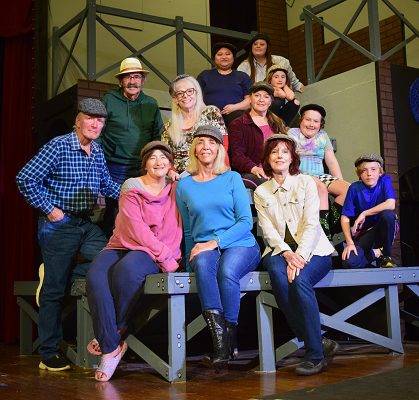Tarot cards have long been used for divination, self-analysis, and spiritual guidance. They were originated in the mid-15th century in Europe. Initially, people used them for playing games, and their mystical attributes were recognized later.
Comprising 78 cards divided into Major and Minor Arcana, tarot cards have become a focal point in various spiritual practices. They offer insights into life’s complexities, helping a yes or no tarot free find answers and direction.
This article will break down the meanings and interpretations of each card, both in its upright and reversed forms, offering you a comprehensive guide to understanding this ancient divination method. Let’s begin!
Major Arcana Tarot Cards and Their Meanings
Here, we will break down the upward and reverse meanings of the major arcana comprising 22 cards.
-
The Fool
Upright: The Fool marks the beginning of a new adventure. This means – taking risks and getting out of your comfort zone can lead to growth and opportunities.
Reversed: When reversed, it warns against rash decisions and urges caution, indicating that you might act without fully considering the implications.
-
The Magician
Upright: This card represents the power to transform intentions into actions. It signifies creativity and a strong will to achieve your objectives.
Reversed: A reversed Magician could imply manipulation or the misuse of power, signaling the need for ethical reflection.
-
The High Priestess
Upright: Symbolizes intuition, unconscious knowledge, and spiritual insight.
Reversed: Suggests that you may ignore your inner wisdom and act recklessly. It can also imply hidden agendas or unfulfilled potential.
-
The Empress
Upright: Represents femininity, beauty, and motherhood. The Empress encourages nurturing, be it a project or a relationship.
Reversed: Indicates neglect and a lack of nurturing, possibly due to overfocus on work or personal ambitions.
-
The Emperor
Upright: Signifies masculine authority, structure, and leadership. It suggests you may need to take control of a situation.
Reversed: Represents an abuse of power and lack of discipline, possibly leading to chaos.
-
The Hierophant
Upright: Deals with traditional values and observations. It suggests seeking spiritual counsel or following established social structures.
Reversed: Indicates non-conformity and the questioning of traditional values. It’s a call for individuality.
-
The Lovers
Upright: Signifies love, harmony, and partnership. This card often points to a moral choice or decision about a relationship.
Reversed: Suggests disharmony or a failed relationship. It indicates a difficult decision must be made.
-
The Chariot
Upright: Represents victory through controlling emotions and urges. It suggests triumph over challenges.
Reversed: Indicates lack of control, leading to failure and needing more focus.
-
Strength
Upright: This card suggests you have courage, inner strength, and resilience to overcome difficulties.
Reversed: Implies weakness or giving in to temptation. It warns against a lack of self-discipline.
-
The Hermit
Upright: Represents solitude and introspection. This card suggests a need for withdrawal from the world for meditation and guidance.
Reversed: Indicates loneliness and isolation. It warns that too much solitude may lead to harmful introspection.
-
Wheel of Fortune
Upright: Signifies luck, karma, and destiny. This card suggests good fortune or a pivotal life event.
Reversed: Implies bad luck or resistance to change.
-
Justice
Upright: Represents fairness, ethical principles, and law. It indicates a time of reckoning where a judgment will be made.
Reversed: Suggests dishonesty or an unjust outcome. It implies a need to correct a wrong.
-
The Hanged Man
Upright: This card suggests sacrificing one thing to gain something of greater value.
Reversed: Indicates stalling and needless sacrifice. It suggests you’re holding on when you should be letting go.
-
Death
Upright: Represents transformation or the end of a phase. This card often implies the beginning of something new following a conclusion.
Reversed: Signifies resisting change or a fear of endings.
-
Temperance
Upright: Symbolizes balance and moderation. It indicates a need for self-control and adjustment.
Reversed: Implies imbalance or excess. It warns against making rash decisions without thinking.
-
The Devil
Upright: Represents bondage, materialism, and addiction. This card suggests you may focus too much on worldly possessions or unhealthy obsessions.
Reversed: Indicates breaking free from bondage and restrictions. It’s a call for independence.
-
The Tower
Upright: Signifies unexpected change and chaos. It suggests an upheaval that may seem destructive but paves the way for renewal.
Reversed: Implies fear of change or dodging disaster.
-
The Star
Upright: Represents hope, spirituality, and renewal.
Reversed: Implies despair or missed opportunities. It warns against loss of faith.
-
The Moon
Upright: Symbolizes illusion, dreams, and intuition.
Reversed: Indicates confusion and misunderstanding. It implies that you may be deceiving yourself.
-
The Sun
Upright: Represents joy, vitality, and celebration. This card is taken as a good omen.
Reversed: Implies that joy and vitality are there but not fully realized yet.
Conclusion
Tarot cards are mystical pieces of cardboard and a guidebook to life. The Major Arcana signifies life’s major events and karmic lessons. On the other hand, the Minor Arcana provides you with guidance about everyday affairs. However, each card has its specific meaning, influencing your overall reading. Regardless of upward or reversed cards, understanding each card’s meaning ensures accurate tarot card readings.
Furthermore, if you are looking for an amazing tarot reading platform, check this 3 card daily tarot for true guidance, self-reflection, and solving everyday problems.










